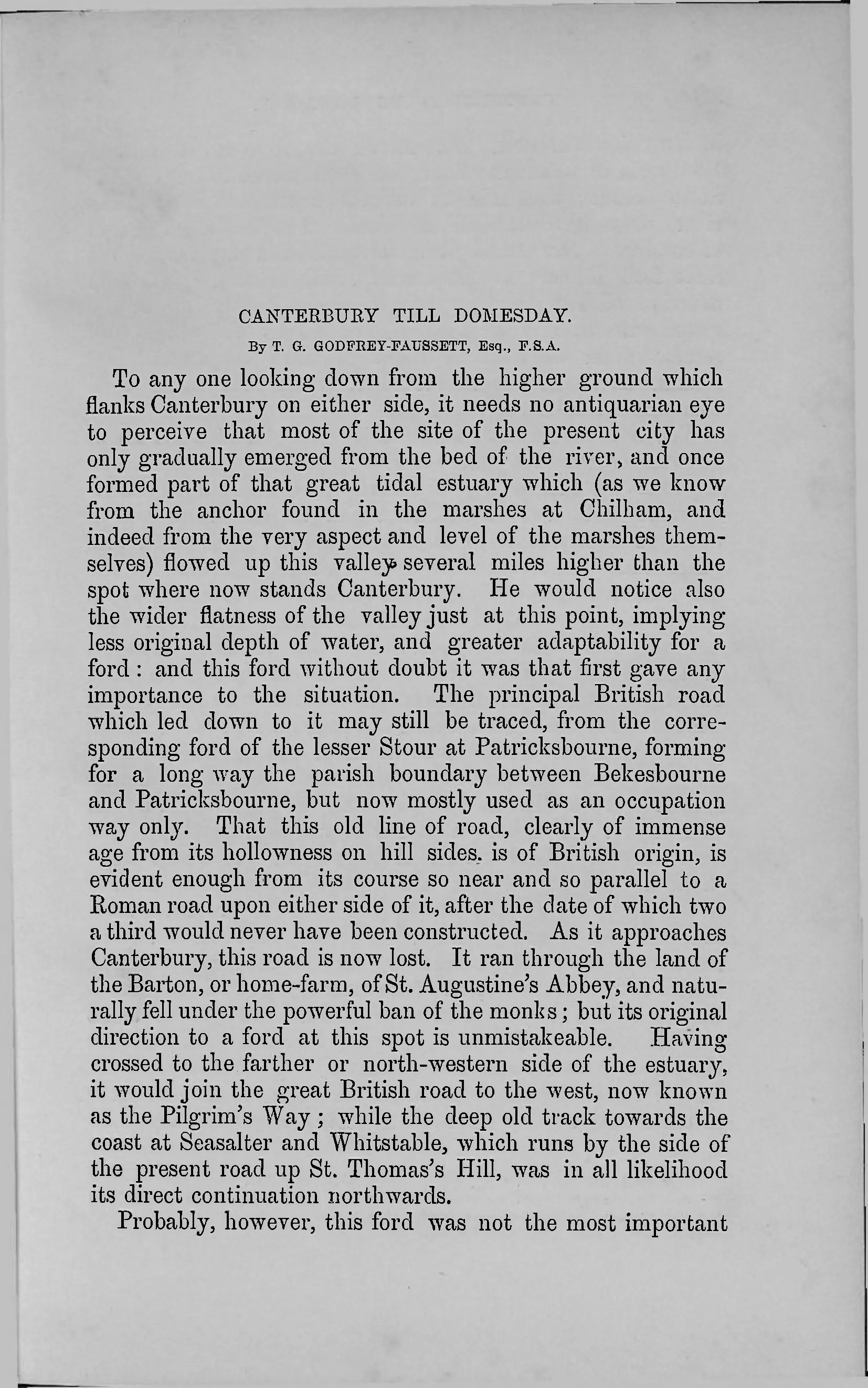
Godfrey-Faussett, T. G. “Canterbury Till Domesday.” Archaeological Journal 32, no. 1 (1875): 369-393
Canterbury Till Domesday
Christianity Domesday Book Durovernum Roman period Saxon conquest historical development medieval period“Canterbury Till Domesday” by T. G. Godfrey-Faussett traces the historical development of Canterbury from prehistoric times to the Domesday Book. Initially, Canterbury’s site emerged from a large tidal estuary, gaining importance due to a strategically located ford that connected major British and Roman roads. The town, known as Durovernum during the Roman period, became an essential station because of its geographical features, with its name derived from the Celtic “Dwr” (water).
Following the Roman withdrawal and Saxon conquest, the site was abandoned by Britons and later resettled by Saxons, evolving into the city of Cantwarabyrig. The arrival of Augustine in the 7th century brought Christianity, transforming the city’s landscape with the establishment of the monastery of Christ Church on the site of Ethelbert’s palace. Significant changes occurred post-Conquest, including the extension of city walls, construction of a castle, and Lanfranc’s rebuilding of the cathedral and monastery, marking Canterbury’s transition into the medieval period and cementing its prominence by the time of the Domesday Book.